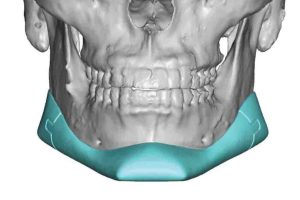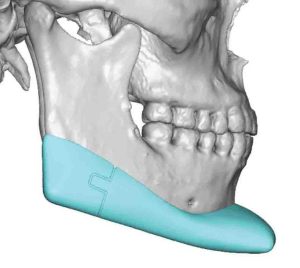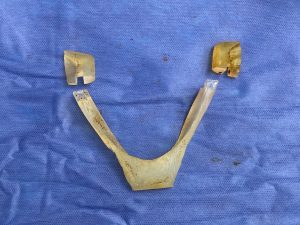Custom jawline implants provide the most effective and complete method of creating a more distinct and augmented lower third of the face. Because of its connected design from one jaw angle to the other (wrap around) it augments the entire inferolateral border of the jawline. While creating such jawline implants creates impressive changes on the planning 3D CT scan, their potential effect can not be fully realized unless they are placed fairly close to how it is designed on the bone.

While in most jawline implant this is not usually a limiting factor for its intact placement, there are situations when it is. This is seen is very large custom jawline implants being placed the first time AND the larger jawline implants are being done as a replacement for a smaller jawline implant. (the capsule of the prior implant decreases the flexibility of the tissue tunnel.


I don’t advocate ever cutting up a custom jawline implant if it can be avoided. Having three unconnected pieces as opposed to one solid piece makes placement over the always difficult jaw angle region inherently more difficult/unpredictable. But given the choice between potentially causing a permanent mental nerve injury vs the risk of some implant malpositioning has a bette chance of secondary recovery/correction.
Dr. Barry Eppley
Indianapolis, Indiana







